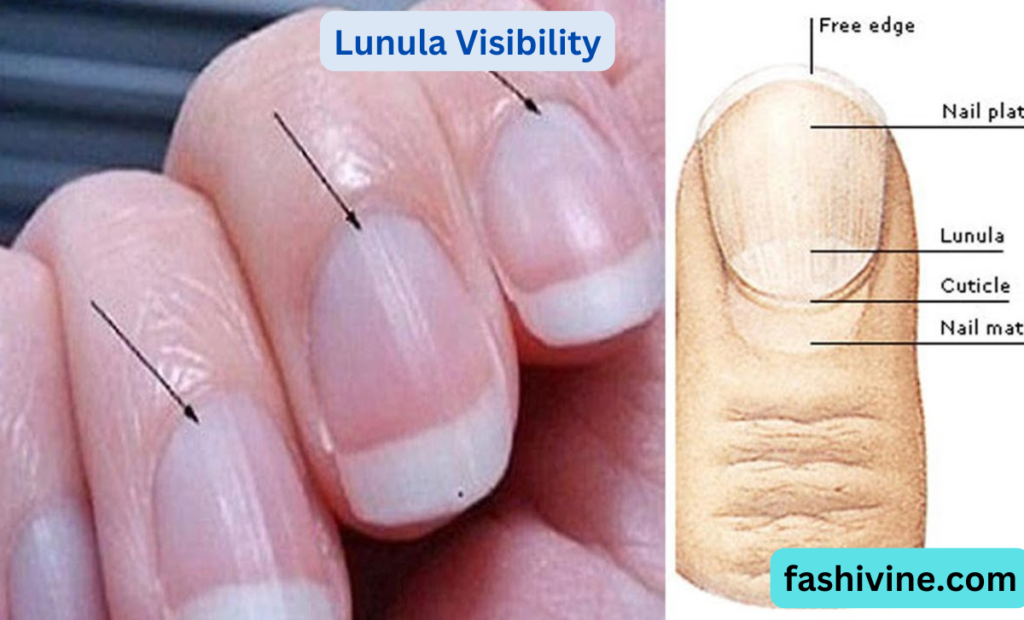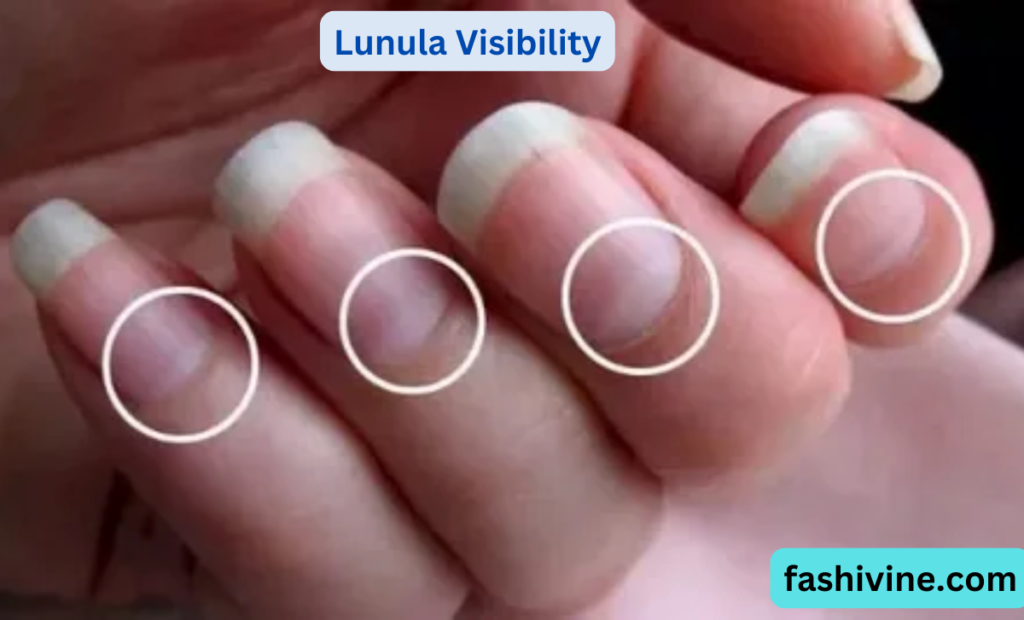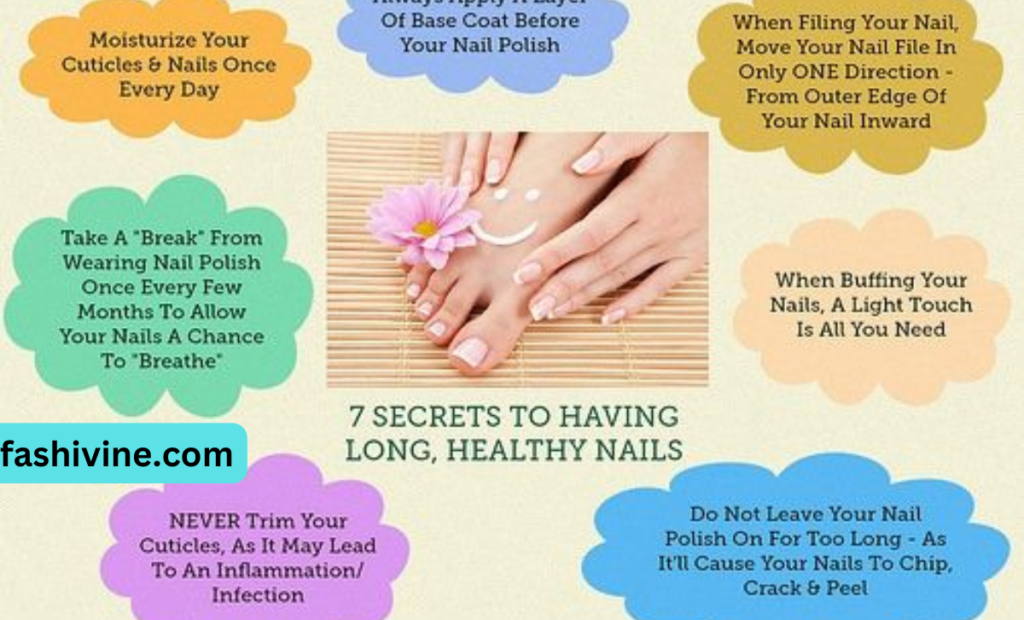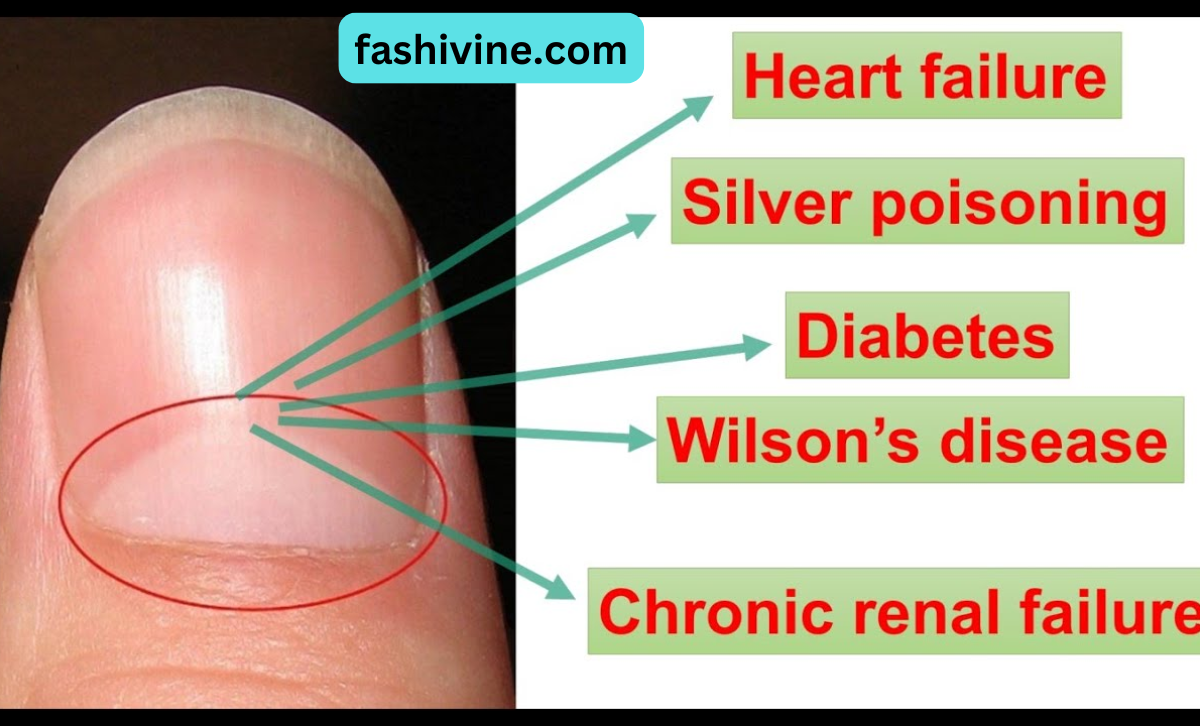These half-moons, medically known as lunulae (singular: lunula), are more than just a curious feature of your anatomy. They can serve as important indicators of your overall health and well-being.
While many people give little thought to these small crescents, healthcare professionals have long recognized that changes in the appearance, size, or color of lunulae can signal underlying health conditions ranging from simple nutritional deficiencies to more serious systemic disorders. Examining the nails, including the lunulae, is a standard part of many physical examinations because they can provide valuable diagnostic clues.
In this comprehensive guide, we’ll explore everything you need to know about these fascinating features of your fingernails—from their biological function and what healthy lunulae should look like, to what various changes might indicate about your health. Whether you’re curious about why your lunulae have changed appearance, or you simply want to understand more about what your nails can tell you about your body, this guide will provide you with the essential information you need.
Remember, while nail changes can provide important health insights, they should be considered alongside other symptoms and professional medical advice. Let’s dive into the world of these tiny half-moons and discover what they might be telling you about your health.
What Are Lunulae and What Do Healthy Ones Look Like?

Lunulae are the visible portion of your nail matrix—the tissue beneath your nail that contains nerves, blood vessels, and lymph. This matrix produces the cells that eventually become your hardened nail plate.
Healthy lunulae typically:
- Appear whitish or paler than the rest of the nail
- Take up a small portion at the base of your nail
- Are most prominent on thumbnails
- Gradually decrease in size across your fingers
- May be barely visible or completely hidden on pinky fingers
Not everyone has a visible lunula on all fingers, and this is often completely normal. If you can’t see them, they’re likely just hidden beneath your cuticle or skin.
Lunulae Color Changes and Their Health Indications
1. White Lunulae (Normal)
- Indicates good health and proper oxygen levels in the blood.
2. Blue or Purple Lunulae
- Could be a sign of poor blood circulation or lung problems.
- Often seen in people with cardiovascular diseases or Raynaud’s syndrome.
3. Red or Pink Lunulae
- May indicate high blood pressure or autoimmune diseases.
- Seen in conditions like lupus or rheumatoid arthritis.
4. Yellow Lunulae
- Often linked to fungal infections or liver problems.
- Can also be a sign of diabetes or chronic lung disease.
5. Black Lunulae
- This is rare but could signal heavy metal poisoning or a serious health condition.
Factors That Can Change Lunulae Appearance
1. Nutritional Deficiencies
Lack of iron, zinc, or B12 can make lunulae smaller or disappear. Eating nutrient-rich foods like leafy greens, nuts, and fish can help.
2. Thyroid Disorders
Both hypothyroidism and hyperthyroidism affect lunula size and color. Small, pale lunulae might indicate an underactive thyroid.
3. Stress and Overwork
Chronic stress can shrink lunulae and cause brittle nails. Relaxation techniques and better sleep can restore nail health.
4. Poor Circulation
Conditions like diabetes or heart disease reduce blood flow to the nails, altering lunulae appearance.
5. Excessive Exercise or High Metabolism
Athletes or people with hyperactive metabolisms often have larger lunulae.
What Does the Shape of Your Lunulae Mean?
Interestingly, the shape of your lunulae determines the natural shape of your nail’s free edge. If your lunula has a slight point, your nail will naturally grow with that same pointed shape at the tip. Nail technicians often use the lunula as a guide when shaping nails to ensure a natural-looking result that suits each nail.
Pyramidal Lunulae
When lunulae form in a triangle shape (pyramidal lunulae), it’s often caused by improper manicuring or trauma to the fingernail. The shape typically reverts to normal as the nail grows out and the tissue heals.
Nail Beauty and Lunulae: Enhancing Your Nails’ Natural Appeal

Lunulae are more than just a small part of your nails—they contribute to overall nail health and beauty. Well-maintained lunulae can make your nails look naturally strong and elegant. Whether you prefer a minimal, natural look or bold, artistic manicures, taking care of your lunulae ensures your nails remain healthy and stylish.
1. The Connection Between Lunulae and Nail Strength
Lunulae play a vital role in nail formation, as they are part of the nail matrix that produces new nail cells. A well-defined lunula often indicates strong, fast-growing nails. If lunulae appear faded or barely visible, it may be a sign of weak or brittle nails that need extra care.
2. How to Maintain Healthy and Beautiful Lunulae
Proper nail care is essential for keeping lunulae looking healthy and your nails strong. Here are some key beauty tips:
- Keep Cuticles Moisturized – Hydrated cuticles protect the lunulae and prevent peeling or cracking. Apply cuticle oil or a hydrating nail serum daily.
- Follow a Nutrient-Rich Diet – Nutrients like biotin, vitamin E, zinc, and iron help strengthen nails and maintain healthy lunulae. Include foods like eggs, nuts, salmon, and spinach in your diet.
- Avoid Excessive Buffing – Over-buffing can thin out the nail plate and make lunulae less visible. Instead, focus on gentle filing and polishing.
- Massage Your Nails – A simple nail massage improves blood circulation, ensuring proper nourishment to the nail matrix, which enhances lunulae visibility and nail growth.
3. Best Manicure Styles to Complement Lunulae
Lunulae can be used as a stylish design element in manicures. Here are some manicure styles that enhance or highlight your lunulae:
- Classic French Manicure – A timeless look where natural lunulae add a subtle, elegant touch to well-groomed nails.
- Reverse French Manicure – Instead of highlighting the tips, this design accentuates lunulae with a different shade, creating a trendy and modern effect.
- Minimalist Sheer Polish – A sheer or nude polish enhances the natural beauty of lunulae while keeping nails looking healthy and polished.
- Metallic or Glitter Accents – Adding metallic or glitter near the base of the nail can draw attention to lunulae, making them a focal point of the manicure.
4. Nail Shapes That Highlight Lunulae
The shape of your nails can impact how visible your lunulae appear. Here’s how different nail shapes work with lunulae:
- Almond or Oval Nails – These shapes elongate the fingers and naturally showcase lunulae for a refined look.
- Square or Coffin Nails – These bold shapes can emphasize lunulae when paired with high-shine finishes or gradient designs.
- Rounded Nails – A classic shape that enhances the natural look of lunulae, making nails appear healthy and well-maintained.
5. Protecting Lunulae from Nail Damage
Certain habits can weaken or damage lunulae, affecting overall nail health. To keep them strong and beautiful:
- Avoid Harsh Chemicals – Frequent exposure to cleaning products, acetone-based nail polish removers, or excessive gel manicures can weaken nails. Always wear gloves and use gentle nail products.
- Limit Acrylic and Gel Extensions – While these enhancements are trendy, overuse can stress the nail matrix and affect lunulae visibility. Opt for breaks between treatments to allow natural nails to recover.
- Be Gentle with Your Nails – Avoid using nails as tools to open packages or scrape surfaces, as this can damage the nail bed and impact lunulae health.
Color Changes in Lunulae and Their Potential Health Implications
Changes in the color of your lunulae can sometimes indicate underlying health conditions:
- Blue lunulae: May indicate Wilson’s disease (a rare genetic disorder causing copper accumulation)
- Blue-purple: Could suggest cyanosis (insufficient blood oxygenation) – requires immediate medical attention
- Blue-gray: Possible sign of silver poisoning or argyria
- Brown: May indicate severe renal disease or chronic kidney failure
- Black: Could be melanoma (Hutchinson’s sign) or result from nail trauma
- Red: Potentially linked to heart failure, cardiovascular disease, or COVID-19
- Yellow: May result from tetracycline medication use
Whole Nail Color Changes Related to Lunulae
Sometimes conditions affect the entire nail, including the lunula area:
Yellow Nail Syndrome
- Causes thick, slow-growing nails with a yellow appearance
- The lunulae may disappear completely
- The middle of the nail may begin to rise
- It may be associated with lymphedema, rheumatoid arthritis, recurrent pneumonia, or pleural effusion
Terry’s Nails
- This causes the bulk of the nail to appear white, erasing the appearance of the lunula
- Characterized by a pink or red band of separation near the nail arc
- In older adults, often a natural sign of aging
- It can indicate diabetes, liver disease, kidney failure, or congestive heart failure
Abnormal Lunulae Size and What It Might Mean
Small or Missing Lunulae
While often normal, small or absent lunulae can sometimes indicate:
- Anemia
- Malnutrition
- Depression
- Cirrhosis (liver scarring)
- Chronic kidney disease
Large Lunulae (Macrolunulae)
Unusually large lunulae might be associated with:
- Hereditary conditions
- Systemic disorders
- Benign soft tissue tumors
- Cardiovascular system issues
- Low blood pressure
- Some research suggests possible links to high physical activity or athletic performance
Lunulae in Nail Biters and Cuticle Pickers
- In nail biters, lunulae may be less visible due to more cuticle growth build-up
- In people who pick their cuticles, lunulae may appear more prominent as the compromised cuticle exposes more of the nail plate
How Doctors Diagnose Nail Abnormalities
When evaluating changes in your lunulae or nails, healthcare providers may:
- Examine the color, shape, and texture of your nails
- Collect samples if they suspect fungal infection or other conditions
- Order blood tests to check for underlying systemic conditions
- Recommend imaging studies if certain diseases are suspected
When to Consult a Doctor
While many variations in lunulae are normal, you should seek medical advice if you notice:
- Sudden changes in the color, size, or shape of your lunulae
- Other unusual symptoms accompanying nail changes (fatigue, shortness of breath, abdominal pain)
- Discoloration that affects multiple nails
- Blue or purple discoloration in your hands and feet (seek immediate medical attention)
Treatments for Conditions Affecting Lunulae
Treatments vary depending on the underlying cause:
- Nutritional deficiencies may require dietary changes or supplements
- Medication-induced changes might necessitate alternative prescriptions
- Systemic conditions require treatment of the primary disease
- Fungal infections may need antifungal medications
Maintaining Healthy Nails and Lunulae
To keep your nails and lunulae healthy:
- Maintain a balanced diet rich in essential vitamins and minerals
- Stay hydrated
- Protect your hands when using cleaning chemicals
- Avoid excessive nail biting or picking at cuticles
- Keep nails and cuticles moisturized
- Avoid harsh nail treatments and excessive use of nail polish removers
- Trim nails regularly and properly
Medical Conditions Associated with Lunulae Changes
Changes in your lunulae can indicate underlying health conditions. While not always a cause for concern, significant changes in size, color, or visibility may point to medical issues. Here are some conditions linked to lunula alterations:
1. Cardiovascular Diseases
Red or pink lunulae can be a sign of heart disease or high blood pressure. In some cases, they may indicate congestive heart failure, especially when paired with swelling in the fingers.
2. Anemia and Iron Deficiency
Pale or almost invisible lunulae may suggest anemia, a condition where the body lacks enough red blood cells to carry oxygen. This can lead to fatigue, dizziness, and brittle nails.
3. Liver Diseases (Cirrhosis, Hepatitis)
Yellowish or brownish lunulae may be linked to liver problems, such as cirrhosis or hepatitis. The liver plays a role in detoxifying the blood, and when it’s not functioning properly, it can impact nail color.
4. Diabetes
Bluish or purplish lunulae may indicate poor circulation, a common issue in people with diabetes. Since diabetes affects blood vessels and oxygen flow, nail changes can be an early warning sign.
5. Thyroid Disorders
An overactive (hyperthyroidism) or underactive (hypothyroidism) thyroid gland can affect nail health. People with hypothyroidism may notice slow nail growth and faded lunulae, while hyperthyroidism can cause brittle or ridged nails.
6. Kidney Disease
White or discolored lunulae, especially when combined with half-and-half nails (a condition where half of the nail is white and the other half is darker), may be linked to kidney disease. This occurs due to changes in protein and waste buildup in the body.
7. Lung Diseases (COPD, Emphysema)
Bluish or purplish lunulae can be a sign of chronic obstructive pulmonary disease (COPD) or other lung conditions. When oxygen levels drop, it affects circulation, leading to bluish discoloration in nails and skin.
8. Malnutrition and Vitamin Deficiencies
If lunulae shrink, disappear, or become ridged, it may indicate a lack of essential nutrients like vitamin B12, zinc, and protein. Proper nutrition is crucial for healthy nail growth and overall well-being.
9. Autoimmune Disorders (Lupus, Psoriasis, Rheumatoid Arthritis)
Autoimmune diseases like lupus or rheumatoid arthritis can cause nail changes, including red, misshapen, or disappearing lunulae. These conditions trigger inflammation, affecting blood flow and nail growth.
10. Heavy Metal Poisoning
Exposure to toxic heavy metals, such as lead or mercury, can cause discoloration and structural changes in the lunulae. If you experience sudden nail changes along with other symptoms, it may be worth investigating potential exposure.
When to Seek Medical Attention
If you notice sudden or drastic changes in your lunulae, especially alongside other symptoms like fatigue, pain, or skin changes, consult a doctor. While lunula changes alone aren’t always a cause for concern, they can serve as an early warning sign of underlying health problems.
Beauty and Nail Health: How Lunulae Reflect Your Nail Care

Your lunulae don’t just indicate health conditions—they also play a role in overall nail beauty. Well-maintained lunulae contribute to healthy, strong nails, enhancing their appearance. Here’s how to care for your nails and keep them looking their best.
1. The Role of Lunulae in Nail Growth
Lunulae are part of the nail matrix, and responsible for new nail cell production. When they’re healthy and visible, it often means your nails are growing strong and well-nourished. If your lunulae shrink or disappear, it could indicate slow nail growth or underlying health issues.
2. How to Strengthen and Enhance Your Lunulae
Maintaining visible, healthy lunulae can improve your nail’s overall look. Here are some key beauty tips:
- Moisturize Your Cuticles – Hydrated cuticles protect your lunulae and prevent nail breakage. Use cuticle oil or a nourishing cream regularly.
- Eat a Balanced Diet – Nutrients like biotin, vitamin E, and iron strengthen nails and help maintain healthy lunulae. Foods like nuts, fish, eggs, and leafy greens are excellent choices.
- Gentle Nail Care – Avoid excessive buffing or filing over your lunulae, as this can weaken the nail matrix and slow down nail growth.
- Massage Your Nails – A gentle massage stimulates blood flow to the nail matrix, promoting healthier, stronger nails and maintaining well-defined lunulae.
3. Nail Polish and Lunula Visibility
Your lunulae can impact the final look of manicures. Some prefer a “moon manicure,” where the lunula is left bare for a stylish contrast. Here are ways to enhance their beauty:
- French Manicure with Visible Lunulae – A natural, elegant look where lunulae add to the aesthetic appeal of the nails.
- Reverse French Manicure – Instead of painting the nail tip, the lunula is highlighted in a different shade, creating a modern twist.
- Sheer Nail Polishes – Using transparent or nude polishes enhances the natural beauty of your lunulae while keeping your nails looking polished and healthy.
4. Lunulae and Nail Shapes: The Perfect Combination
Different nail shapes can affect how visible your lunulae appear:
- Oval or Almond Nails – These elongate the fingers and keep lunulae subtly visible, creating a natural, elegant look.
- Square or Coffin Nails – These bolder shapes can emphasize lunulae when paired with a high-shine or ombré design.
- Rounded Nails – A classic shape that works well with neatly maintained lunulae for a clean and healthy appearance.
5. Common Beauty Myths About Lunulae
There are many misconceptions about lunulae and nail beauty. Here’s the truth behind some common myths:
- “Bigger lunulae mean stronger nails.” – Not necessarily! Some people naturally have smaller lunulae, and nail strength depends more on diet and care.
- “Buffing makes lunulae more visible.” – Over-buffing can damage the nail matrix, weakening the nail. It’s better to focus on hydration and nutrition.
- “Polish stains lunulae permanently.” – While dark polishes can temporarily stain nails, lunulae are naturally resistant to discoloration if you use a base coat.
Myths and Facts About Lunulae
Myth: No visible lunula means poor health
Fact: Many healthy people have no visible lunula on some or all fingers. They’re often just hidden beneath the cuticle.
Myth: Larger lunulae always indicate a health problem
Fact: Lunula size varies greatly between individuals and can be influenced by genetics and other factors unrelated to health conditions.
Myth: Lunulae size can be changed through supplements
Fact: There is limited scientific evidence that supplements can change the appearance of lunulae. Many nail health supplements, including biotin, have limited proven effectiveness.
Also read this blog:https://fashivine.com/soul-tattoos/
Conclusion
Remember, your fingernails can be a window into your overall health. While changes in lunulae appearance should not cause immediate alarm, being aware of these potential indicators can help you stay proactive about your well-being. Always consult healthcare professionals for proper diagnosis rather than relying solely on nail appearance for health assessments.
Regular observation of your nails, including the lunulae, can be a simple yet effective way to monitor certain aspects of your health. By understanding what normal looks like for your nails, you’ll be better equipped to notice meaningful changes that might warrant medical attention.
Whether you’re a healthcare professional looking to enhance your diagnostic skills, a nail technician interested in understanding the science behind your craft, or simply someone curious about what your body may be telling you, paying attention to these small crescents can provide valuable insights into your overall health and well-being.
FAQ’s
Why are my lunulae barely visible?
Faint or missing lunulae can result from poor circulation, nutrient deficiencies, or natural variations in nail growth.
How can I make my lunulae more visible?
Maintain a healthy diet, massage your nails for better circulation, and avoid excessive buffing or nail damage.
Do lunulae indicate overall health?
Yes, changes in lunulae size or color can sometimes signal health issues like anemia, thyroid problems, or circulation issues.
Can I highlight my lunulae in a manicure?
Yes! Reverse French manicures, sheer polishes, or glitter accents can enhance and showcase your lunulae beautifully.
How do I keep my lunulae and nails strong?
Moisturize your cuticles, eat nutrient-rich foods, avoid harsh chemicals, and take breaks from acrylic or gel manicures.
https://www.youtube.com/watch?v=AHI6YE9iqyA
Raabia is a passionate content writer specializing in creating engaging, SEO-optimized content that connects with audiences and drives results. With a knack for storytelling and a focus on clarity, Raabia crafts content across various niches, including fashion, lifestyle, and more.doing work with different websites,2 years experience.







